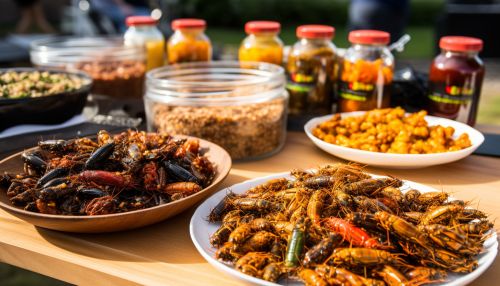Entomophagy
Introduction
Entomophagy, the practice of consuming insects by humans, has been a part of many traditional diets across the globe and continues to be prevalent in certain cultures today. The practice is particularly common in regions such as Africa, Asia, and Latin America, where insects are often abundant and diverse. This article delves into the various aspects of entomophagy, including its history, nutritional benefits, environmental impact, and cultural significance.
History
The history of entomophagy dates back to prehistoric times, with archaeological evidence suggesting that early humans consumed insects. The practice has been documented in ancient texts, such as the Bible and the writings of Aristotle and Pliny the Elder, who noted the consumption of certain types of insects among the Greeks and Romans.
Nutritional Value
Insects are a rich source of protein, vitamins, and minerals. They also contain essential fatty acids and fiber. The nutritional content of insects varies depending on the species, but generally, they are considered a highly nutritious food source. For example, crickets are known to contain more protein per gram than beef or chicken.
Environmental Impact
Entomophagy is often touted as a sustainable alternative to traditional livestock farming. Insects require less land, water, and feed to produce, and they emit fewer greenhouse gases. Additionally, insects can be farmed on organic waste, thus contributing to waste management and recycling efforts.
Cultural Significance
In many cultures, insects are not just a survival food but a delicacy enjoyed for their unique flavors and textures. In some societies, certain insects are associated with rituals, ceremonies, or religious beliefs. Despite the widespread practice of entomophagy, it is often met with disgust and rejection in Western societies, a phenomenon known as 'entomophobia'.
Challenges and Future Prospects
While entomophagy presents numerous benefits, there are also challenges to its widespread adoption. These include regulatory hurdles, lack of consumer acceptance, and potential health risks associated with consuming insects. However, with growing interest in sustainable and alternative protein sources, the future of entomophagy looks promising.


